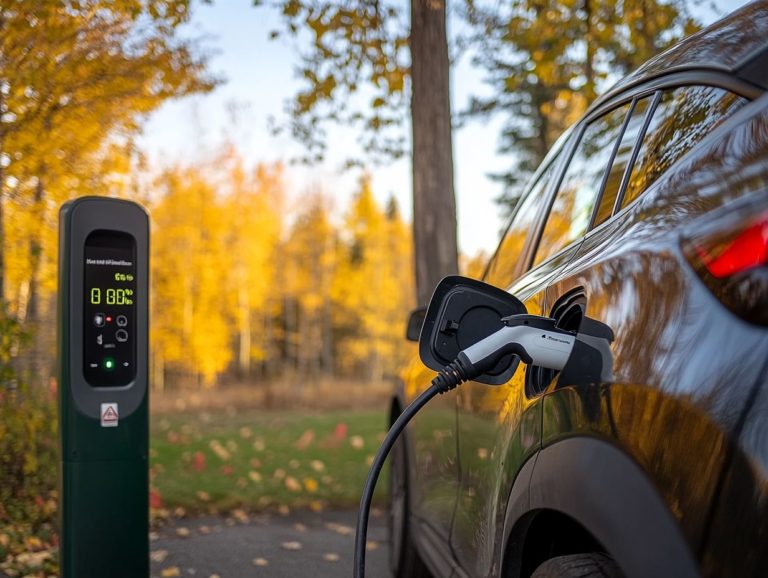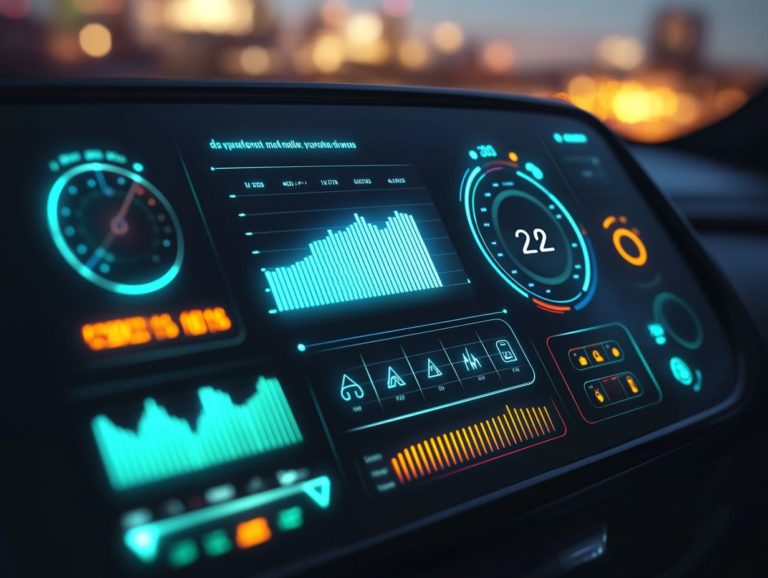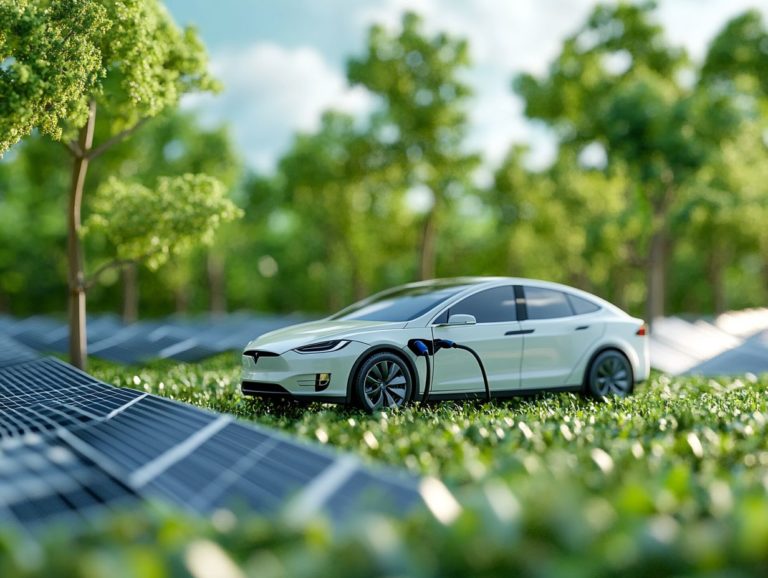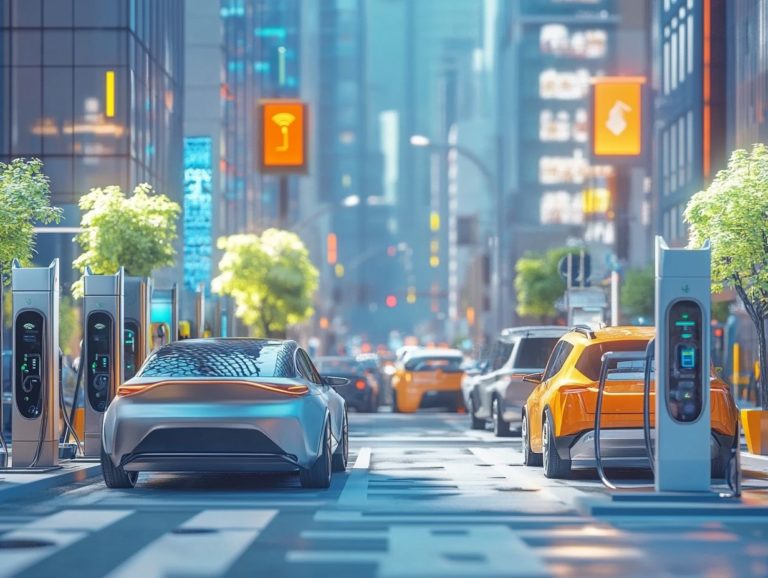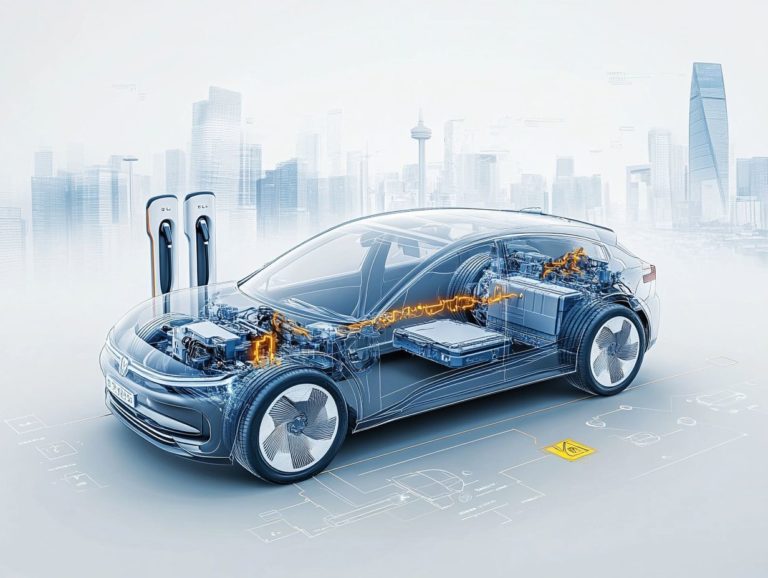What is Fast Charging and How Does It Work?
Fast charging has revolutionized how you power your devices, providing an efficient remedy to the frustration of low battery life. This article explores the various fast charging technologies, explaining how they function and highlighting their significant advantages.
It also considers the limitations and crucial factors to keep in mind, while offering a glimpse into the future of fast charging and its potential innovations. Prepare to elevate your understanding!
Contents
Key Takeaways:
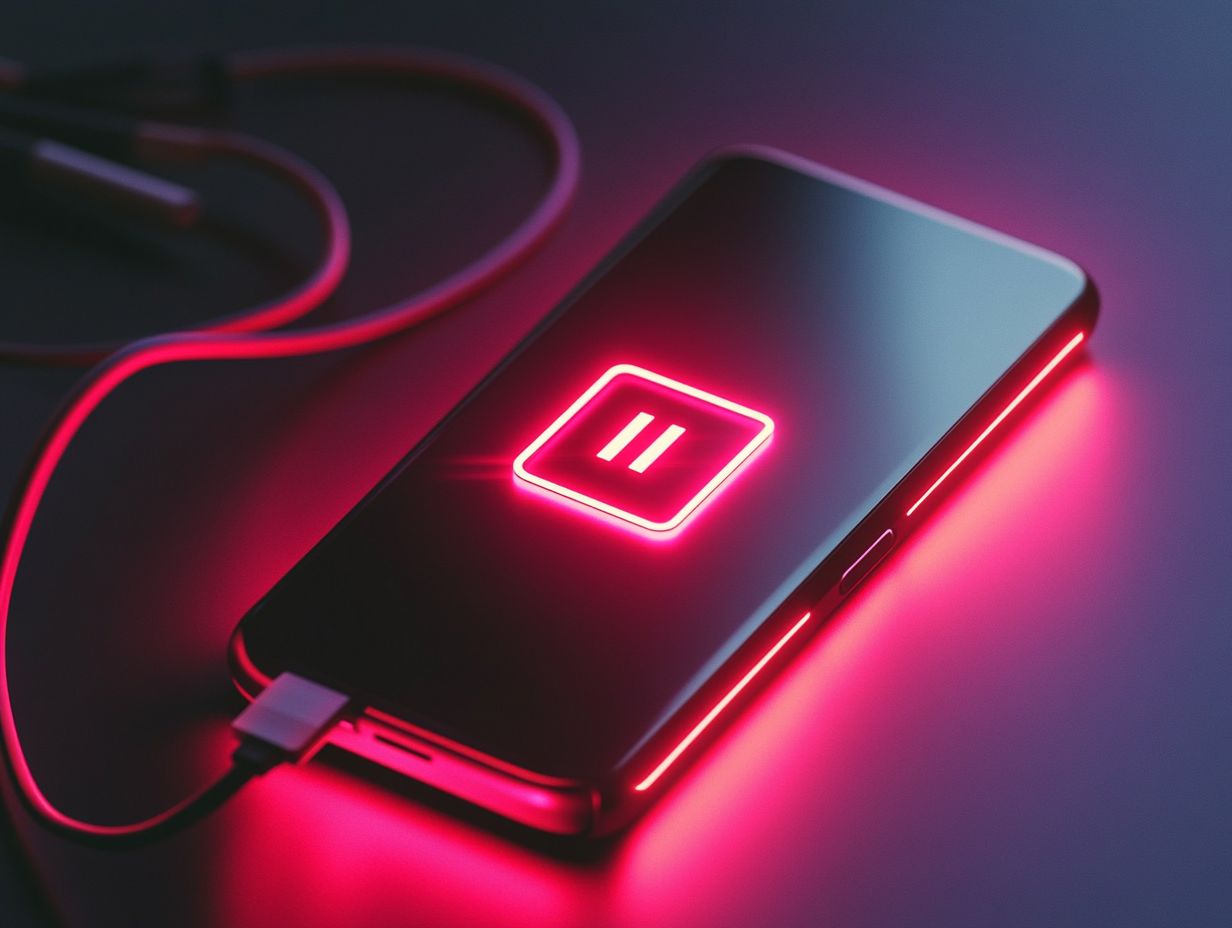
- Fast charging is a technology that allows devices to charge more quickly, saving time and increasing convenience.
- There are different types of fast charging methods, each with unique characteristics and capabilities.
- Fast charging allows for a faster transfer of energy and quicker charging times.
Definition and Purpose
Fast charging is an exciting technology that enables your smartphone and other electronic devices to charge at significantly improved rates compared to traditional methods. This innovation transforms your user experience by drastically reducing charging times while protecting battery health a priority as devices like the Pixel 7a, Galaxy S24 Ultra, and models from brands like Apple and Samsung take center stage.
By utilizing advanced charging standards such as USB Power Delivery and Qualcomm Quick Charge, fast charging systems deliver higher wattage to compatible devices, allowing them to recharge swiftly without straining the battery. This minimizes downtime for you, especially when you rely on your devices throughout the day, balancing the need for speed with the essential consideration of battery longevity.
Over time, adopting these advanced charging technologies helps preserve battery capacity, ensuring your devices remain functional for as long as possible an undeniable advantage in our fast-paced digital world.
Types of Fast Charging Technologies
Fast charging technologies encompass various standards and methods, including well-known options like USB Power Delivery and Qualcomm Quick Charge. You ll also find charging methods created by specific companies like OPPO, HUAWEI, and Xiaomi, each bringing unique features to the fast charging landscape.
Overview of Different Methods
Fast charging methods come in several standards, and it’s crucial to understand them. For instance, USB-C uses power negotiation to adjust voltage and current dynamically, ensuring optimal charging speed. Proprietary methods like TurboPower and SuperCharge offer unique advantages tailored to specific devices.
These advanced techniques significantly enhance charging efficiency, allowing you to power up your smartphones and tablets in a fraction of the usual time. Take USB-C, for example it can deliver up to 100 watts, enabling not just mobile phones but also laptops to charge rapidly. Proprietary technologies like Qualcomm’s Quick Charge and Huawei’s SuperCharge can boost current to impressive levels, often exceeding 30 watts for mobile devices.
While wired charging typically offers faster and more reliable speeds, you ll find wireless fast charging appealing for its convenience. However, it usually operates at lower power rates, commonly around 10-15 watts, depending on the standard, such as Qi. This variation in performance emphasizes the importance of choosing the right charging method for each device and situation.
How Fast Charging Works
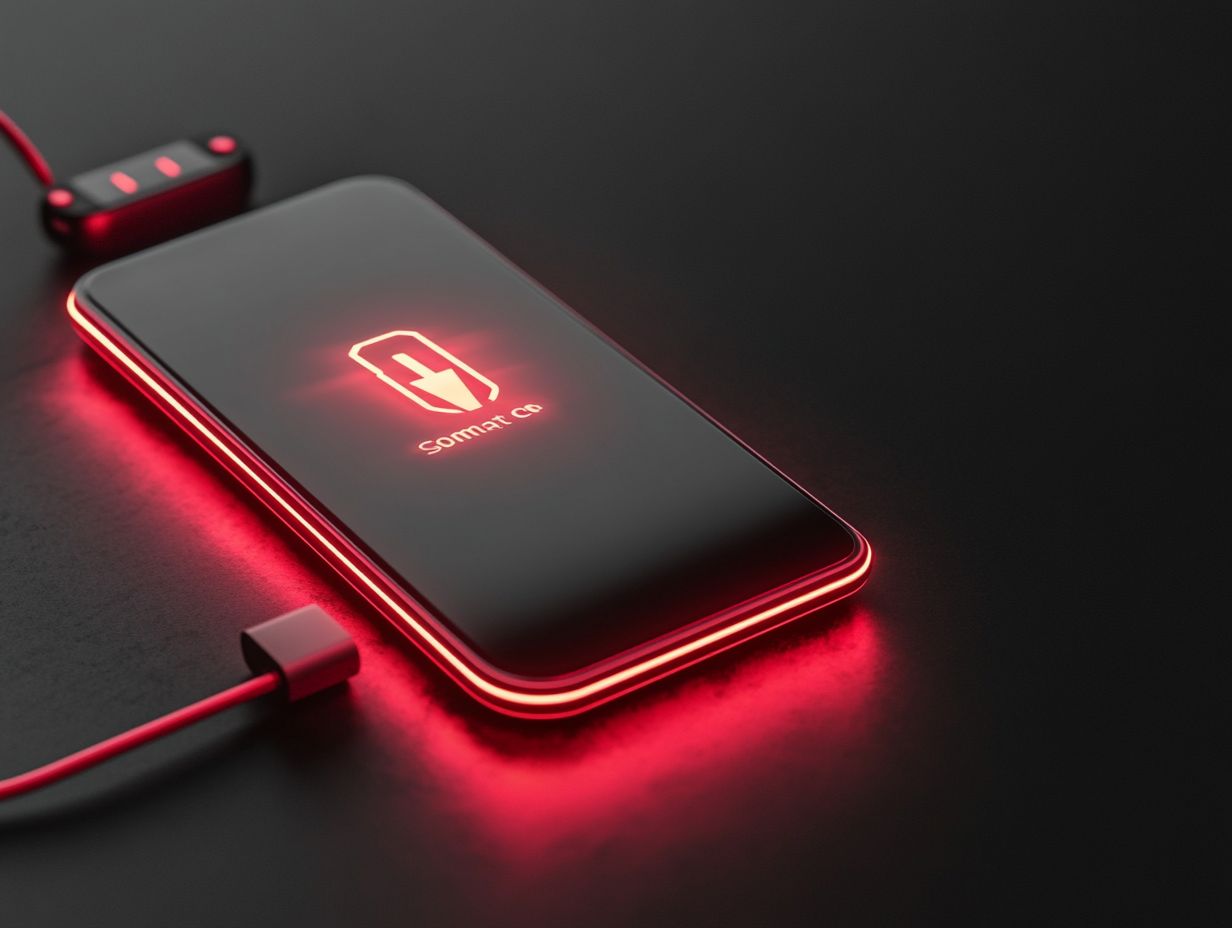
Fast charging optimizes power delivery, enabling a more efficient flow of energy into your device s battery. By using higher voltage current, it significantly enhances charging speed while ensuring that battery health remains intact.
In summary, fast charging technologies not only save you time but also protect your device’s battery health. Explore and leverage these innovations to enhance your daily tech experience!
Step-by-Step Process
The fast charging process unfolds through several key stages. It starts with your device talking about power needs and culminates in keeping your battery performance strong.
This process begins as your device communicates its power requirements to the charger, ensuring compatibility. Once this handshake is successful, the charging power can surge significantly, leveraging protocols like Quick Charge or USB Power Delivery.
Take, for example, devices that support Qi or Apple’s MagSafe technology. Here, the efficient transfer of power is enhanced through advanced coils and precise positioning. Each charging method varies, with some manufacturers implementing unique optimizations. Samsung might deploy Adaptive Fast Charging, while OnePlus frequently utilizes its proprietary Warp Charge.
These subtle differences play a crucial role in how quickly and efficiently your device can recharge. They cater perfectly to your need for speed and reliability in this tech-savvy world.
Benefits of Fast Charging
The benefits of fast charging are numerous, offering you the convenience of quickly replenishing your smartphone’s battery. This efficiency in charging times enhances your overall user experience and significantly boosts the usability of your device.
Convenience and Efficiency
Fast charging technologies offer you unmatched convenience and efficiency. You can power up your devices significantly faster than traditional methods. With standards like USB Power Delivery and innovative fast wireless options, you can enjoy a seamless charging experience.
This advancement cuts down the time you spend tethered to a wall outlet. It gives you the power to maintain productivity while on the move. Imagine charging your phone in just 30 minutes!
Various charging standards, including Qualcomm Quick Charge and Apple s MagSafe, deliver impressive efficiency. They ensure your devices reach optimal battery levels without unnecessary delays. As a result, you can confidently head out, knowing your gadgets are fully powered and ready to tackle the challenges of your daily life.
Limitations and Considerations
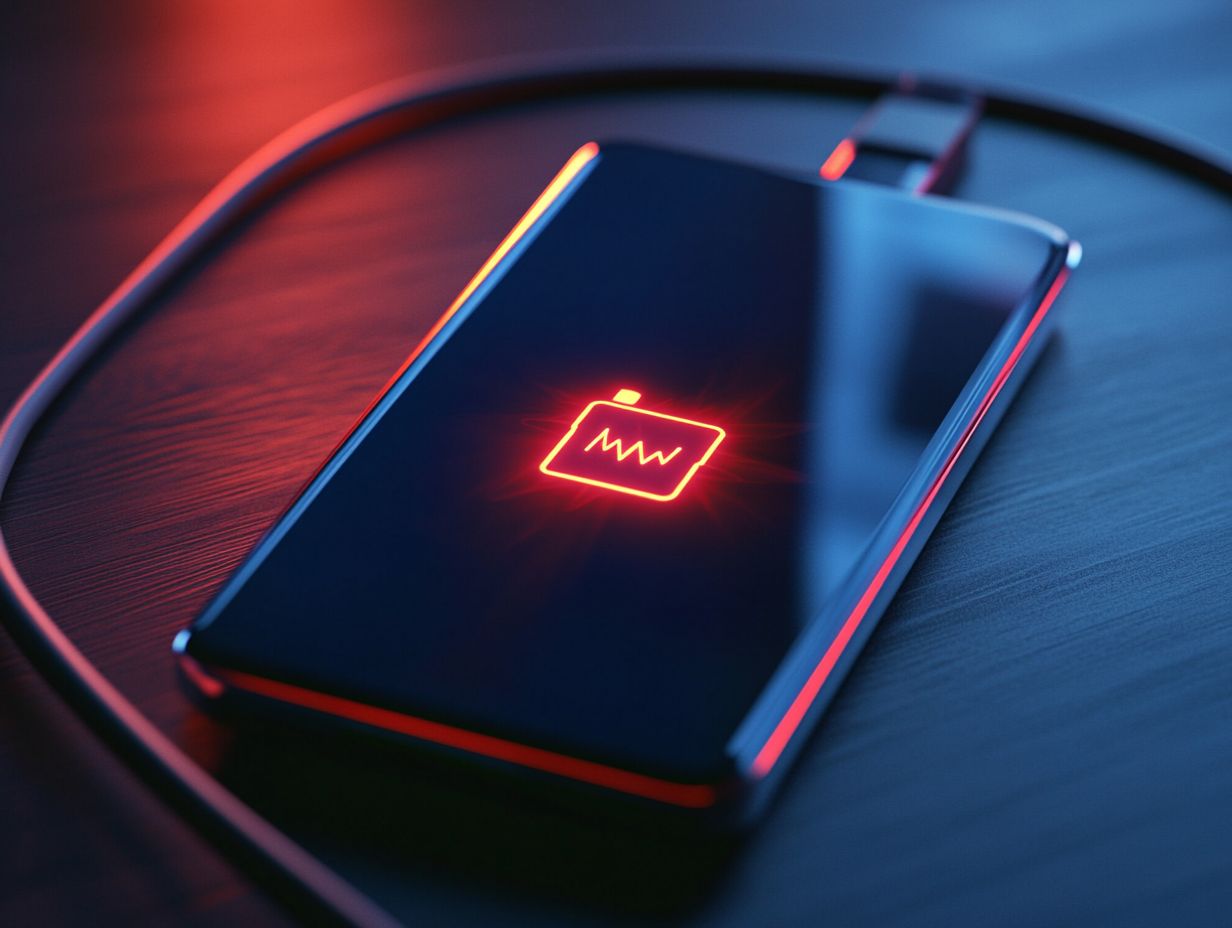
While fast charging presents a range of compelling benefits, it s crucial for you to grasp its limitations and considerations. Be mindful of potential impacts on battery health, as well as the various factors that can influence charging speed.
Factors that Affect Charging Speed
Several factors can influence your charging speed, including the type of charging technology you use, the compatibility of proprietary standards, and the condition of the battery being charged.
The performance of different charging adapters is crucial in determining how efficiently power reaches your device. You may notice that various smartphone models come with differing battery capacities and charging infrastructures, which can significantly affect your overall charging experience.
Environmental conditions, such as temperature and humidity, also play a role. Extreme heat or cold can impede the battery’s ability to accept a charge efficiently. By taking these factors into account, you ll gain a clearer understanding of why some devices charge faster than others in various circumstances.
Future of Fast Charging
The future of fast charging is undeniably promising. With continuous advancements in charging standards and technology, you can expect not only increased charging speeds but also enhancements in battery health and overall user experience.
This is especially true with the emergence of fast wireless options, which are set to redefine convenience and efficiency in your everyday life. Stay tuned for these exciting advancements that will transform your charging experience!
Advancements and Potential Impact
Recent advancements in fast charging technology are changing how you recharge your devices. New standards and wireless options provide quicker access to power.
These developments include enhanced protocols like Qualcomm’s Quick Charge 5 and USB Power Delivery, which significantly boost charging speeds while ensuring your safety remains a top priority. Innovations in wireless charging, using resonant inductive coupling a method that allows devices to charge without direct connections provide greater range and efficiency. You’ll enjoy the freedom to use your devices anywhere without being tethered to outlets, enabling more spontaneous device use and potentially reshaping your daily routines.
The interplay between fast charging and device performance becomes increasingly crucial. Modern smartphones harness these technologies to optimize battery health, minimize downtime, and seamlessly support more intensive applications.
Frequently Asked Questions
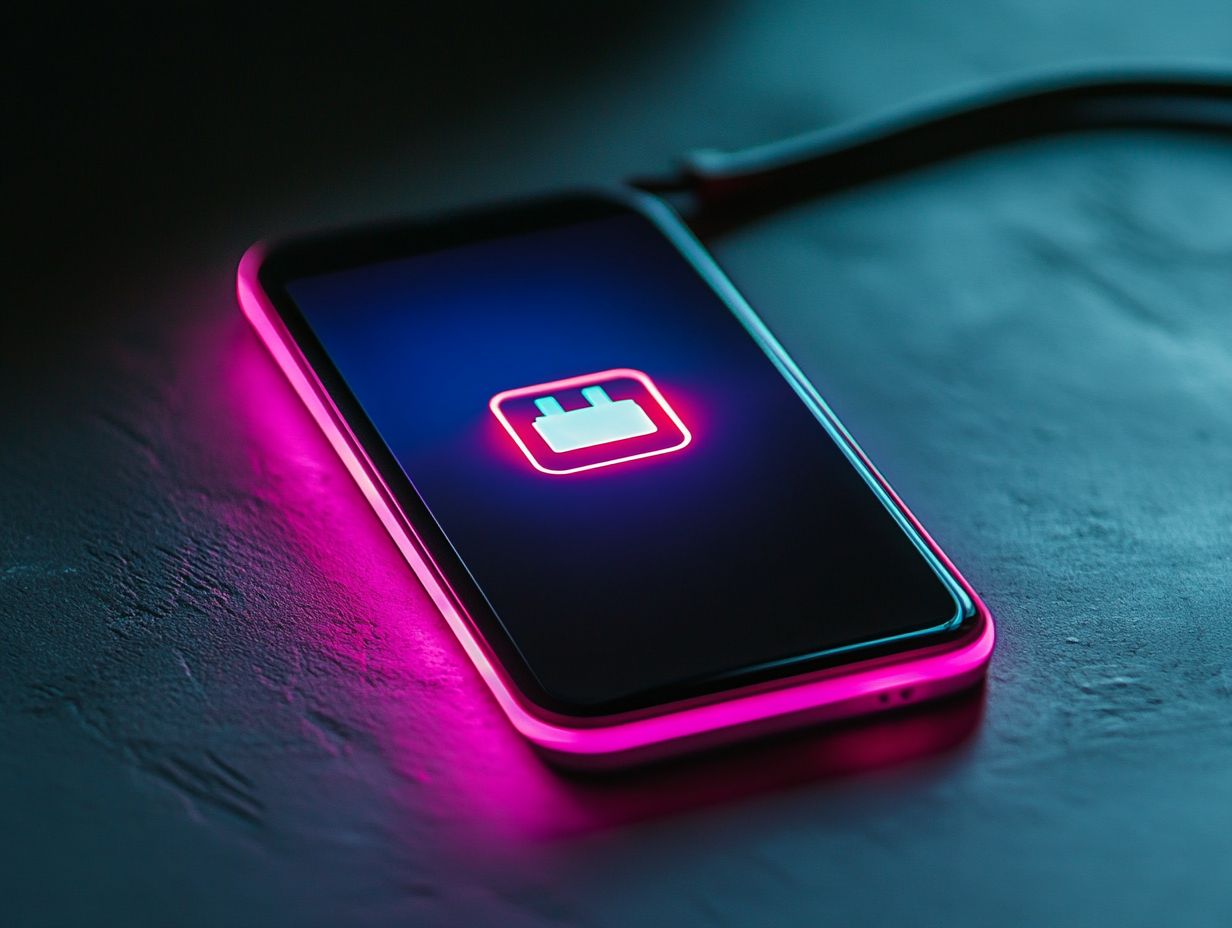
What is Fast Charging and How Does It Work?
Fast charging is a technology that allows you to charge your electronic devices at a much faster rate than traditional methods. It works by providing a higher level of power to your device, allowing it to charge more quickly.
Why is Fast Charging Important?
Fast charging saves you time and allows you to use your device more quickly. In just a few minutes, you can get a significant amount of charge, making it ideal for those on the go.
What Devices are Compatible with Fast Charging?
Most modern smartphones and tablets are compatible with fast charging, including popular brands like iPhone, Samsung, and Google. Check your device’s specifications to ensure compatibility.
How Does Fast Charging Affect Battery Life?
Fast charging does not negatively impact battery life. In fact, it can benefit your battery by preventing overcharging and reducing the time the battery is under stress.
What Types of Fast Charging Technologies are Available?
There are several types of fast charging technologies. These include Qualcomm’s Quick Charge, USB Power Delivery, and SuperVOOC, each designed to charge your device faster.
Are There Any Safety Concerns with Fast Charging?
While fast charging is generally safe, it’s important to use certified chargers and cables to prevent any potential damage to your device. Avoid using your device while it is charging with a fast charger.
Discover the best fast charging options for your devices today!


